Planning a trip to Valley of Flowers and Hemkund Sahib in Uttarakhand is one of the most peaceful and beautiful journeys you can take. Tucked away in the Garhwal Himalayas, these two places are full of natural beauty, adventure, and spiritual energy. Whether you're someone who loves trekking or just loves nature, this trip will stay in your heart forever.
This guide will walk you through everything you need—best time to visit, how to get there, what to pack, how much it costs, and even tips for safety and culture. If you’ve been wondering how to plan a trip to Valley of Flowers and Hemkund Sahib Uttarakhand, you’re in the right place.
Plan Trip to Valley of Flowers Uttarakhand
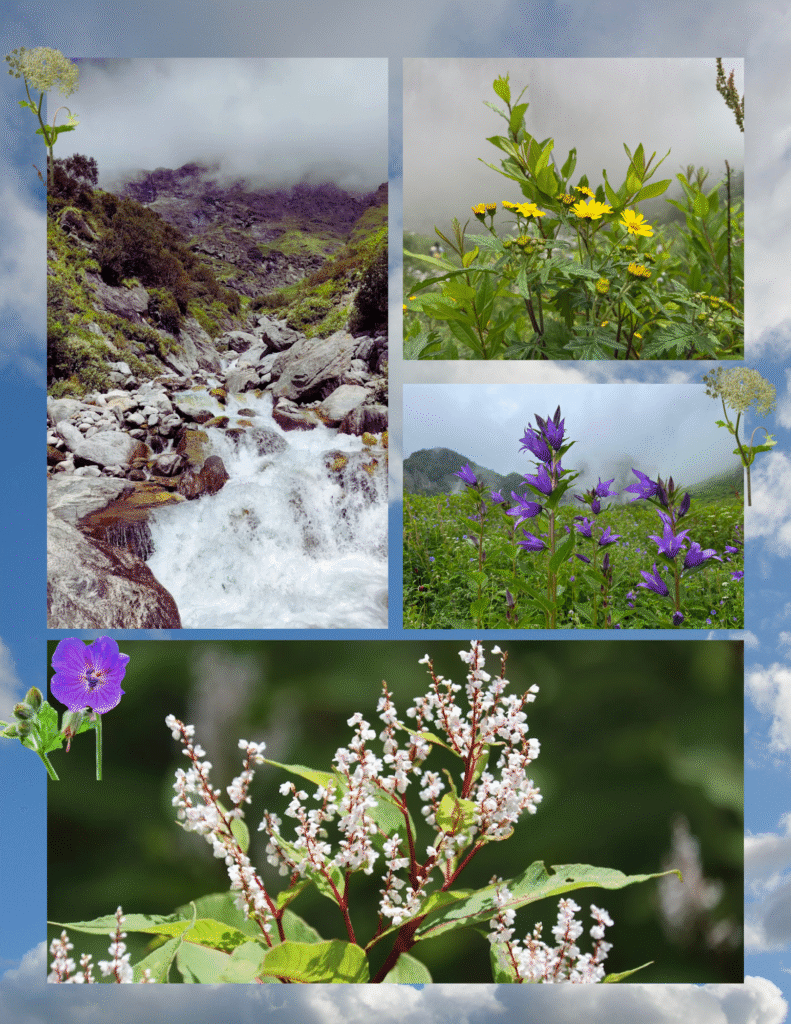
The Valley of Flowers is a world-famous national park and a UNESCO World Heritage Site. Every year during the monsoon, the valley turns into a colorful carpet of over 500 kinds of wildflowers. It’s truly magical.
Nearby, at 4,329 meters above sea level, is Hemkund Sahib, a peaceful Sikh pilgrimage site. Together, these places give you a perfect mix of nature and spirituality.
To visit them, you’ll hike through beautiful hills, see rare plants and animals, and enjoy calm, fresh air. But don’t go without planning—this trip needs proper preparation and physical fitness.
Your journey will start from Govindghat, the base point for both treks. The walk to Valley of Flowers is a bit easier, while the route to Hemkund Sahib is steep and challenging. But once you reach, it’s totally worth it.
Why These Two Destinations Make the Perfect Combo
Both Valley of Flowers and Hemkund Sahib start from the same village—Ghangaria. So it’s very easy to plan both in one trip.
While one place gives you nature’s beauty, the other gives you spiritual peace. It’s not just a trip, it’s a journey for your heart, mind, and soul.
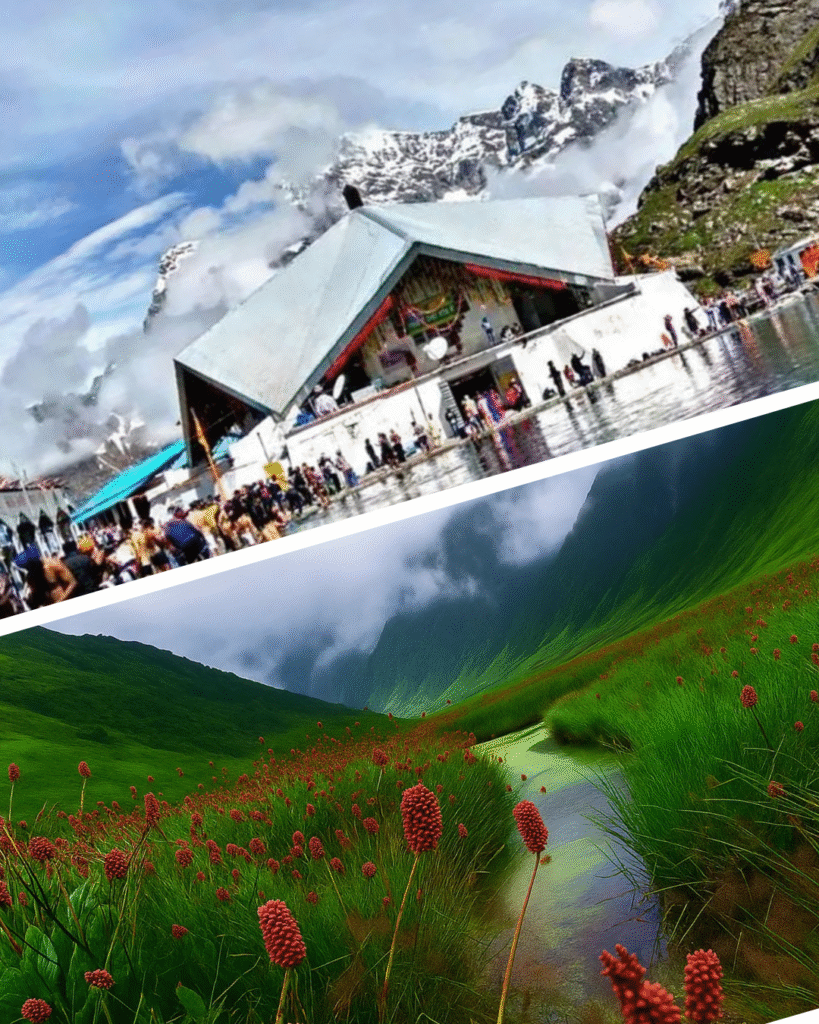
Best Time to Visit Valley of Flowers and Hemkund Sahib
The best time to visit is mid-July to the end of August. This is when the flowers are in full bloom and the weather is good.
Hemkund Sahib is open from June to mid-September. After that, it closes due to snow. Days are pleasant, but nights can get cold, so bring warm clothes.
How to Reach Valley of Flowers and Hemkund Sahib
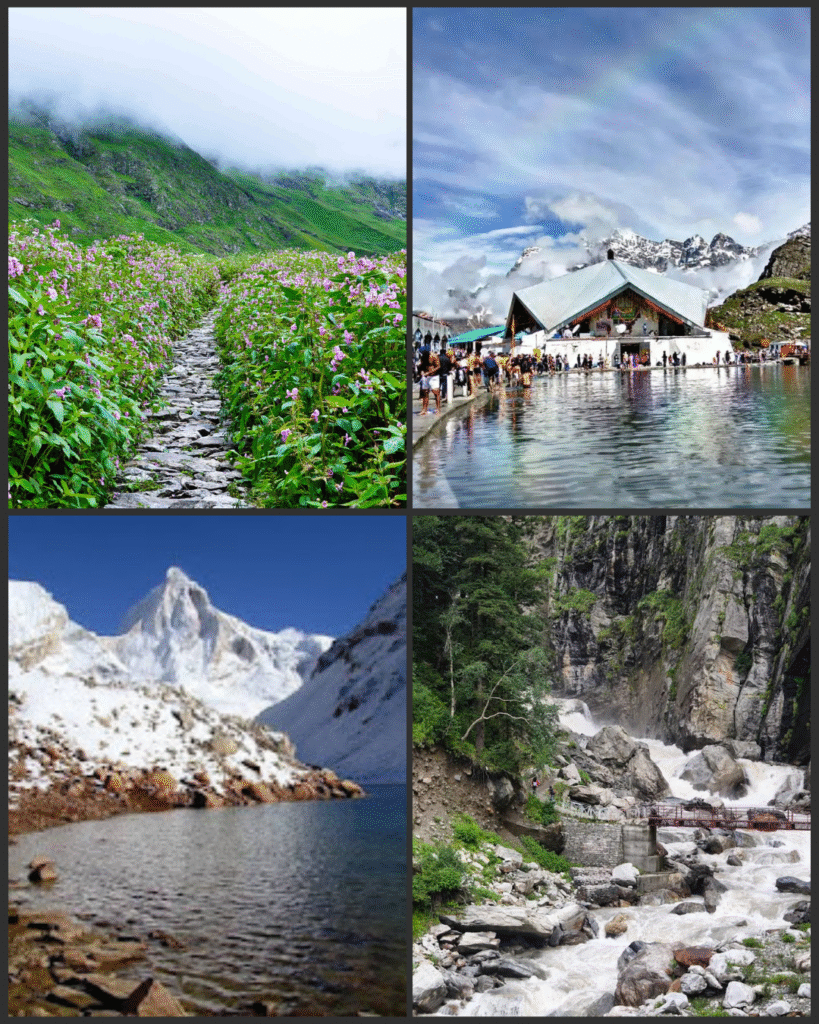
The closest airport is Jolly Grant Airport in Dehradun, and the nearest major train station is Haridwar.
From there, you’ll travel by road to Govindghat (via Joshimath). From Govindghat, it’s a 13 km trek or you can hire a mule or porter to Ghangaria. From Ghangaria, you’ll walk 4 km to Valley of Flowers and 6 km uphill to Hemkund Sahib.
Shared jeeps, private taxis, and buses are available up to Govindghat
Ideal Travel Itinerary for the Trek
Plan your trip for 6 to 7 days:
- Day 1: Reach Haridwar/Rishikesh
- Day 2: Travel to Govindghat
- Day 3: Trek to Ghangaria
- Day 4: Visit Valley of Flowers
- Day 5: Trek to Hemkund Sahib
- Day 6: Return to Govindghat
- Day 7: Travel back to Haridwar/Delhi
Take your time and enjoy the beauty around you.
Permits and Entry Guidelines
You need a permit to enter the Valley of Flowers. It’s available at the Forest Office in Ghangaria.
- Indians: ₹150
- Foreigners: ₹600
- Bring: Photo ID and passport-sized photos
You can also book your permit in advance on the Uttarakhand Tourism website to save time.
How Much Will It Cost?
Here’s a rough idea of your total cost:
- Transport (round trip): ₹4,000–₹6,000
- Hotels: ₹600–₹1,500 per night
- Food: ₹300–₹600 per day
- Guide (optional): ₹1,000 per day
- Entry fee: ₹150–₹600
Total for 7 days: ₹10,000 to ₹18,000 (depending on your choices)
Essential Travel Tips
- Start your treks early to avoid rain
- Rest a day in Ghangaria before going to Hemkund
- Pack light but bring rain gear and warm clothes
- Stay hydrated and eat light food
- Wear good trekking shoes and wool socks
Where to Stay in Ghangaria
Ghangaria has limited but decent places to stay. One of the most recommended options is Hotel Ghangaria by Travel to Nirvana. It offers clean rooms, hot water, in-house meals, and is very close to the trek starting points.
It's peaceful, comfortable, and ideal after a tiring day. Book your room in advance, especially if you’re traveling in July or August.
Packing Essentials
Bring the following:
- Waterproof trekking shoes
- Warm jackets and thermals
- Raincoat or poncho
- Gloves and wool cap
- Sunscreen and sunglasses
- Lip balm and basic medicines
- ID card and permit copies
Don’t overpack—carry only what you need.
Why Travel Insurance Matters
At high altitudes, things can go wrong—altitude sickness, injuries, bad weather. Travel insurance that covers emergency evacuation and high-altitude treks gives you peace of mind.
Joshimath has the nearest hospital, but carry your own first-aid kit.
Mobile Connectivity and Internet Availability
Mobile networks don’t work well after Joshimath. BSNL works best in Ghangaria, but signals are still weak.
Download offline maps and inform your family before the trek. Treat this as a chance for a digital detox.
Local Cuisine and Food Tips
Meals are mostly simple and vegetarian. You’ll find parathas, rice dishes, and aloo sabzi in dhabas. At Hemkund Sahib, enjoy a warm langar meal served to all visitors.
Eat light before treks to avoid stomach problems.
Be an Eco-Friendly Traveler
The valley is part of the Nanda Devi Biosphere Reserve and is very sensitive.
- Don’t litter
- Don’t pluck flowers
- Carry reusable water bottles
- Avoid plastic
- Stick to the trekking path
Leave nature untouched for others to enjoy.
Don’t Miss These Nearby Attractions
After your trek, you can visit:
- Badrinath Temple – a famous Hindu shrine
- Mana Village – last Indian village before the Tibet border
- Auli – known for its ski slopes and cable car rides
Common Mistakes to Avoid
- Don’t underestimate the trek
- Don’t skip rain gear
- Don’t rush your trip
- Always check the weather forecast
- Don’t forget to carry cash (no ATMs in Ghangaria)
Safety Tips for Beginners
- Trek with a group or guide
- Avoid trekking in rain or at night
- Watch out for slippery trails
- Carry ORS and altitude medicine like Diamox
- Don’t push your body too hard
Cultural Etiquette at Hemkund Sahib
- Cover your head before entering
- Remove your shoes
- Sit quietly during langar
- Don’t waste food
- Don’t take photos inside the prayer area
Respect the sacred atmosphere of the Gurudwara.
Photography Suggestions
- Bring a wide-angle lens and macro lens
- Early morning is the best time for photos
- Don’t step off trails for pictures
- Carry extra batteries and memory cards
- Respect nature and avoid flash photography on flowers
After the Trek: Souvenirs and Rest
Once your trek ends, take a day or two to rest your legs. In Joshimath or Rishikesh, shop for:
- Woolen shawls
- Herbal teas and oils
- Local handicrafts
- Religious souvenirs
Buying local helps support mountain communities.
Conclusion
Planning a trip to Valley of Flowers and Hemkund Sahib Uttarakhand is not just a journey—it’s an experience you’ll cherish forever. From the colorful meadows to the peaceful Himalayan lake, everything feels magical.
With the right planning, this trip can be safe, affordable, and full of beautiful memories. So, take the first step, start planning today—and let the mountains do the rest.
FAQs
- What is the best month to visit Valley of Flowers?
Mid-July to August is the best time to see the flowers in full bloom. - Is Hemkund Sahib difficult to reach?
Yes, it's a steep 6 km uphill trek. You need good stamina. - Do I need permits for Valley of Flowers?
Yes, get them at Ghangaria or online in advance. - Can I trek alone without a guide?
Yes, but guides are helpful and make the trip safer. - Is food easily available during the trek?
Yes, you’ll find local dhabas and langar at Hemkund Sahib. - Is camping allowed in the valley?
No, camping is not allowed inside the Valley of Flowers.

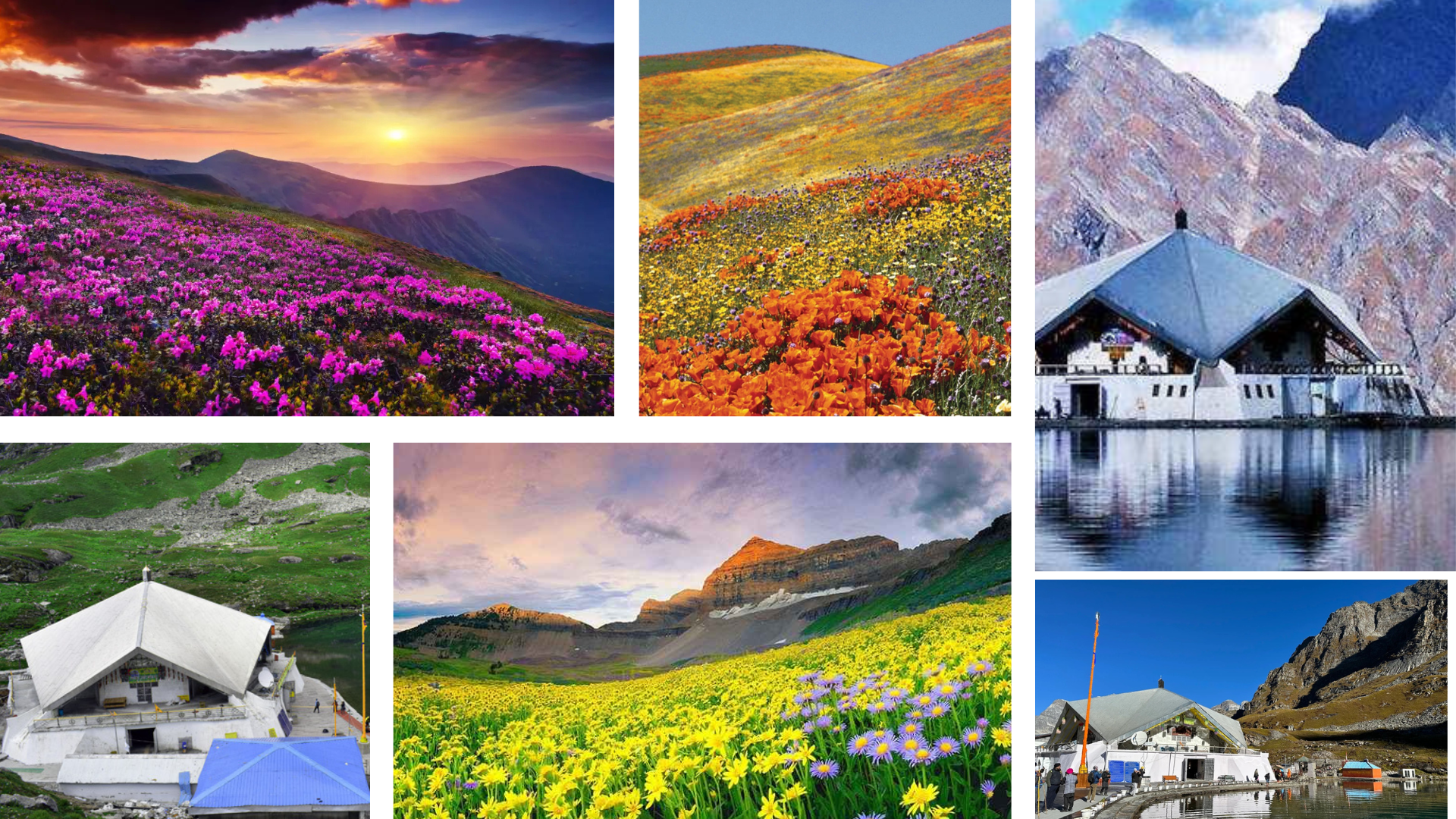
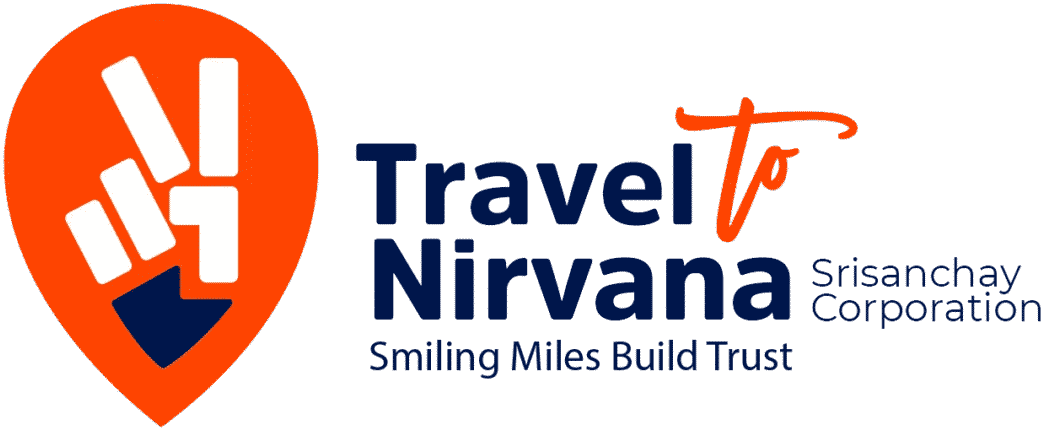
 Call
Call WhatsApp
WhatsApp